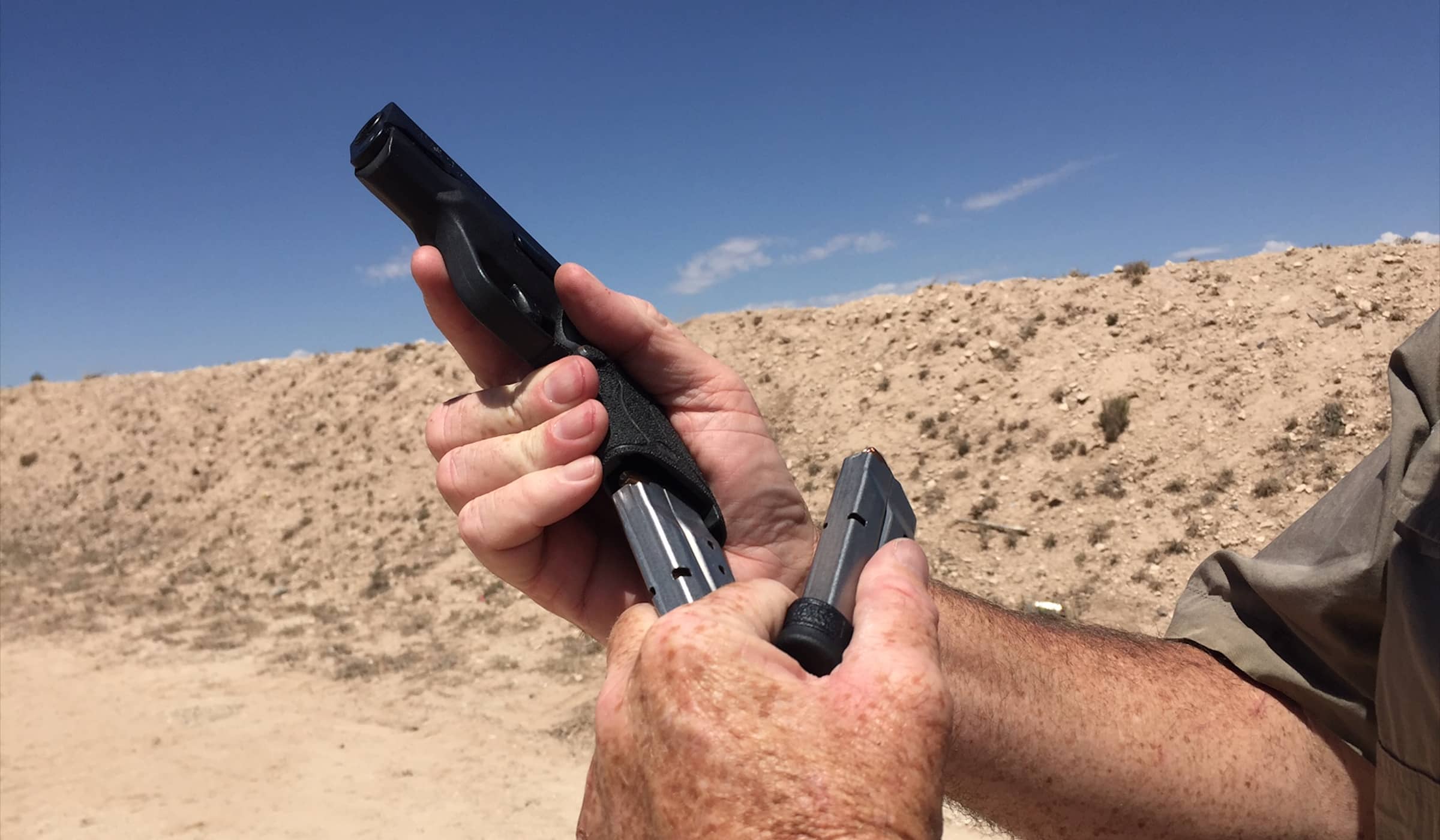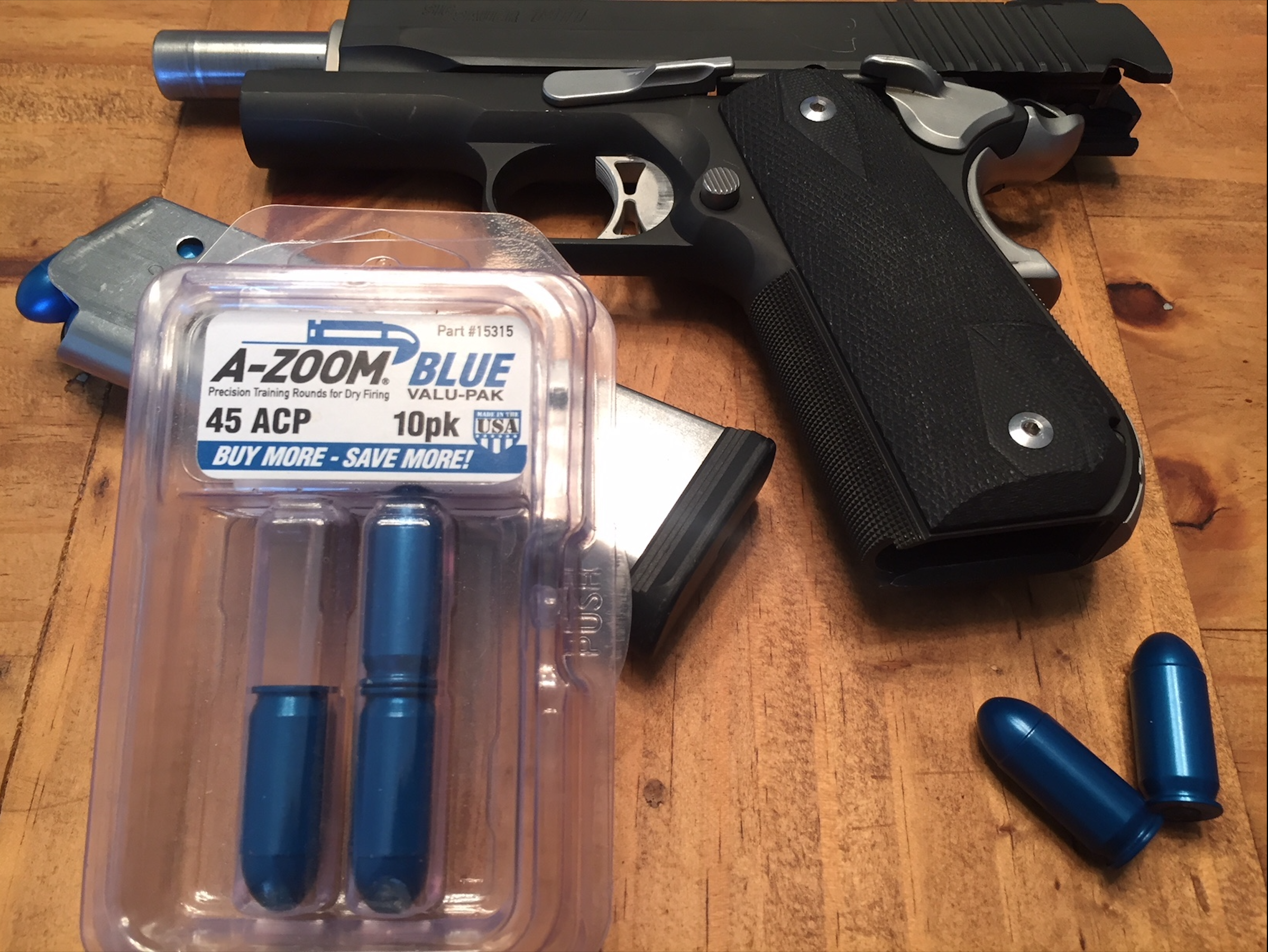Can’t go to the range this month? 4 ways to practice pistol skills at home
Terry Nelson 11.12.18

If you are like most folks today, you find it difficult and perhaps even cost-prohibitive to go to the gun range on a weekly or even monthly basis. Make no mistake; I believe you should get on the range for live fire and good training as often as possible. But there other training methods that you can employ without ever leaving your home if you just can’t get to the range this month.
It goes without saying that you must adhere to safety rules at home to utilize these techniques. There have been far too many “accidental” or more correctly “negligent” discharges at both ranges and homes. So adhere to strict safety protocols, the first being NO LIVE AMMO! Secondly, muzzle control and then a safe zone so that if the unthinkable happens the result is a hole in a solid wall, not a person or pet. The following are a sampling of techniques and methods you can easily practice at home:
Dry fire/Trigger Press
Dry fire has long been used on the range and off by credible instructors and seasoned shooters. It’s a simple but effective method to focus on your grip, sight alignment, sight picture and trigger press along with stance. Simply place a target of your choice in a designated safe zone, make doubly sure all live ammunition is out of the chamber, magazine or cylinder of your handgun (and out of the room completely). Once safe, you can proceed to press the trigger on an empty gun while pointing muzzle on target and working on the above-mentioned fundamentals to include feeling trigger reset on semi autos. Many competitive shooters utilize this method before a match. The goal is to eliminate poor trigger press and other improper technique.
The most common shooting error is jerking the trigger, usually out of anticipation. Often a shooter believes they’re doing a great job of trigger-pressing but a slight jerk is still resulting in a low point of impact. There’s an electronic feedback device for that. The MantisX pairs with an app to give you instant feedback about where shots would land on target if you were firing for real. It also works for live fire. This matchbox-sized device attaches to the rail or magazine floorplate and allows you to self-instruct your way to better accuracy.
Some people express concern whether dry firing will damage the gun. Today’s handguns aren’t harmed by dry fire. If it makes you feel better to have something for the firing pin or striker to land on, Lyman’s A-Zoom training rounds are a good option and can be used in any of the drills mentioned below.

Reloads
I see many students struggle trying to perform even a basic emergency reload. I also believe in teaching a magazine exchange or “tactical reload”. Although there is some disagreement among instructors as to the types of reloads students need to know, suffice it to say if your handgun runs dry in a defensive encounter you need to get it reloaded right now! This means practicing the technique and above all, having a spare magazine on your person. These techniques can be practiced at home. Utilize inert training rounds to add an element of realism to your training.
Malfunctions
Sooner or later you will experience a malfunction in your semiauto handgun. These are generally broken into 3 categories, failure to fire, failure to eject and double feed (failure to extract). The causes for any particular malfunction vary and may include shooter error, faulty magazines or ammunition, or a problem with the gun itself. Most of the time malfunctions I see on the training range are shooter-induced. Bottom line you should train to immediately go to a malfunction clearance procedure and get the gun running again. The same inert training rounds mentioned above for at-home training are equally useful to set up and practice clearing malfunctions. The immediate go to process of tap, rack, and roll will clear most malfunctions and is easily practiced at home. The double feed requires a bit more work to clear but can also be trained both at the range and at home.
Draw stroke
It goes without saying that to utilize your handgun in a defensive encounter you must be able to efficiently draw it from the holster. How and where you carry your pistol is a personal decision, but if takes more than a second or two to access and present your self-defense gun then you may be setting yourself up for failure. As with all other techniques mentioned, drawing the gun from its location is a skill set that can easily be honed off-range. The first step of getting the gun into play is a good firing grip. Coincidentally, a proper grip is also a fundamental of marksmanship.
All of these techniques can be practiced at home and of course on the range. As always, safety should be a top priority. It should come as no surprise that all of these skills are baseline fundamentals and therefore become second nature for anyone taking self-defense with a handgun seriously.

